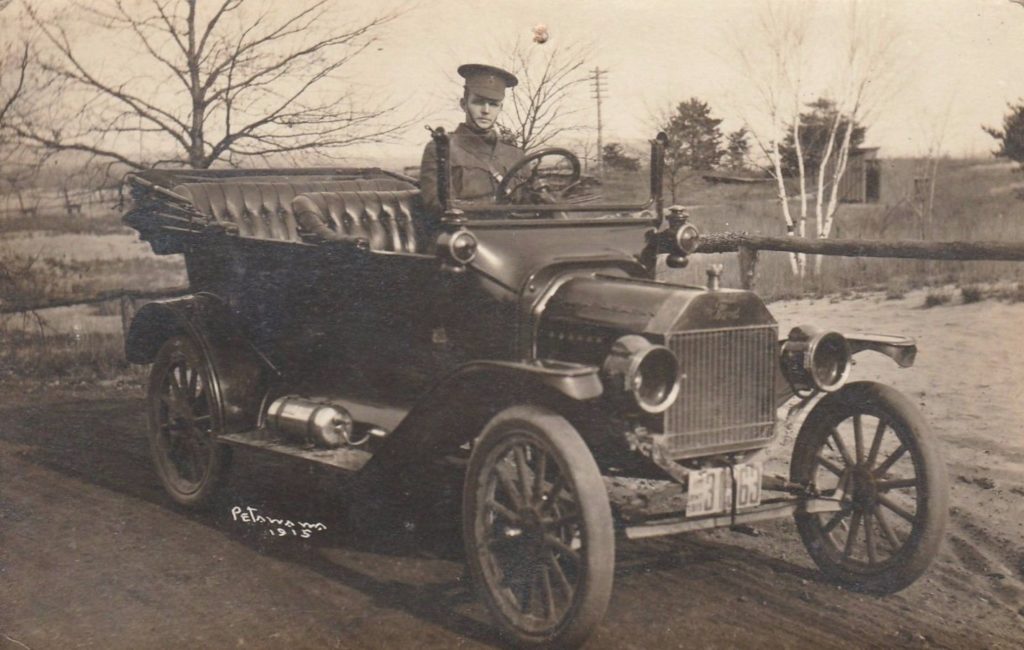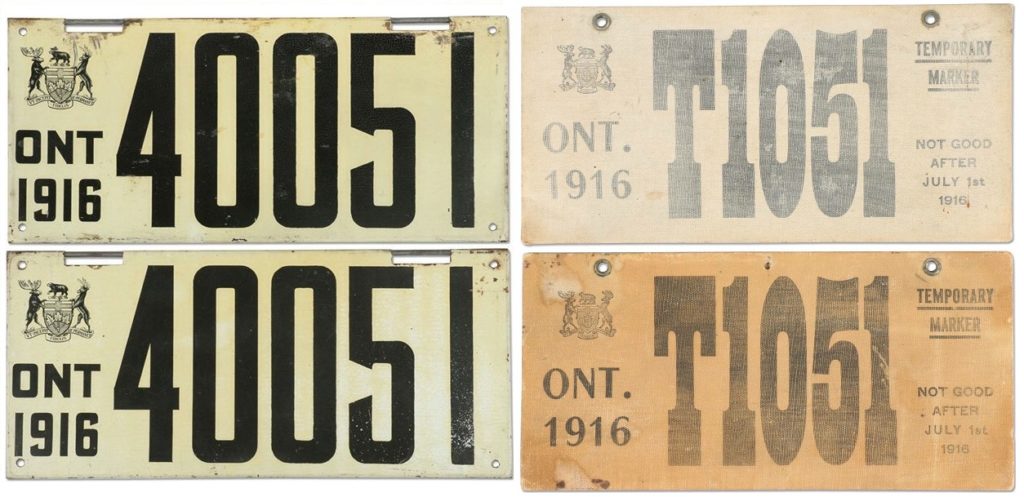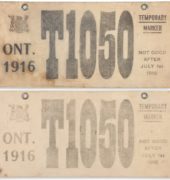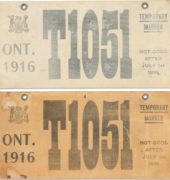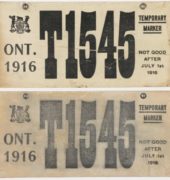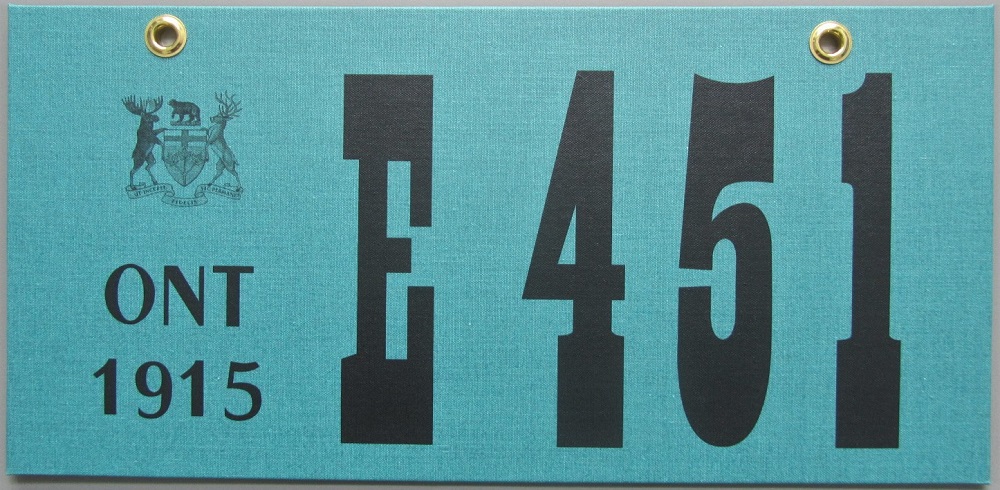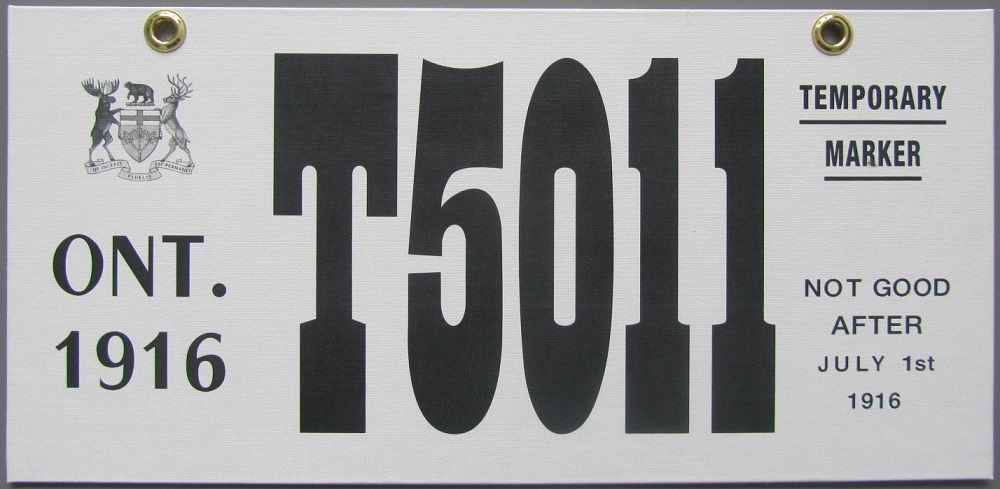Skip to:
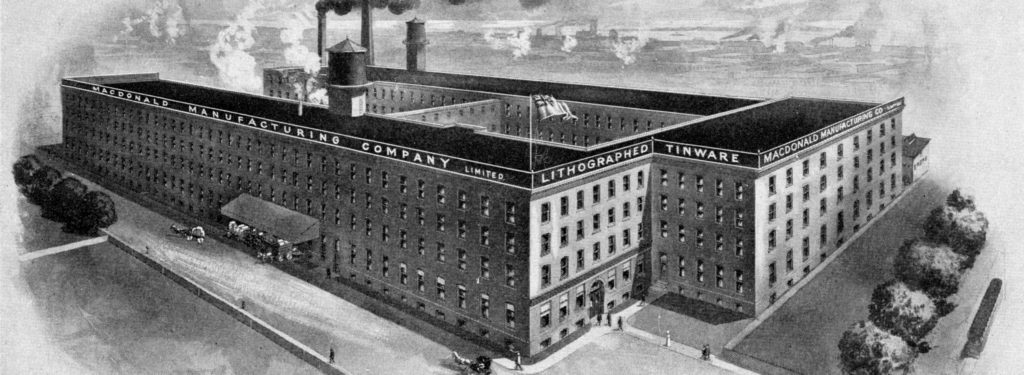
In 1915 and 1916 the Great War as it was called then was in it’s height. Any metal that could be found was being used to build munitions, vehicles and planes to help the Allied Forces on the European front. Coupled with an unanticipated increase in vehicle registrations during this time frame, license plate supplies quickly dwindled. McDonald Manufacturing Co. of Toronto, the contractor that was responsible for producing license plates for the province from 1912 to 1916, ran out of plates in both 1915 and 1916.
As a stop gap measure, plates made of pressed cardboard covered in cloth were issued. They had copper grommets located at the top of the plates for mounting. As you can imagine they did not fair well against the elements and as a result very few survive today.
Ontario issued annual plates from December 1st of the previous year to February 28th of the following year. So for instance, 1915 plates would first be available December 1st 1914 and would expire February 28th 1916. The time allowed to replace your plate with the following year’s plate (the renewal period) was every December to February.
Sometime in the fall of 1915, Ontario ran out of plates and started issuing cardboard pairs with an “E” prefix. The “E” stood for “Emergency”. As it was already late 1915, they were never meant to be replaced with metal 1915 plates even if metal supplies became available. Instead, they were to be used until the 1916 plates became available – December 1st, 1915. The state of the roads coupled with the time of year (fall/early winter), Emergency plates did not fare well. Quite feasibly most simply fell apart in the rain or snow. As a result very few are known to survive to this day. At this time it’s not known how many were made due to the limited amount of numbers found to date (ie: E138 to E793).
1915 Emergency Plates Known: 6
Approximately 38,000 pairs of 1916 plates were made and distributed beginning December 1st, 1915. Sometime in the spring of 1916, Ontario ran out of plates and started issuing cardboard pairs with a “T” prefix. The “T” stood for “Temporary”. Unlike the previous 1915 Emergency plates, the 1916 Temporary plates had a mid-year expiry on Dominion Day – July 1st, 1916. This time McDonald Manufacturing was able to secure more metal to produce a second batch of plates. All temporary plates were removed and replaced once they were produced.
Temporary plate numbers began at T1 and the highest confirmed is T1972. When the metal plates arrived, they began in the 39000 series and matched the corresponding temporary plates to be replaced. For example, T1 was replaced with the 39001, T2 replaced with 39002 and so on. They continued well into the 40000 series (ie: T1051 was replaced with 40051 as pictured above). To date, more 1916 temp plates have been found. Some possible reasons for this is that they were attached to the cars for a shorter period of time and as these were issued in the spring, weather conditions were kinder to the plates. There have also been some high-profile auctions as of late that have brought more of these out of the woodwork.
1916 Temporary Plates Known: 13

“Automobile stuck in mud, Morely Avenue, Toronto, 1912”
City of Toronto Arhives, Fonds 1244
1915 & 1916 Replicas
In 2018, the late John Powers had some replicas produced and offered them to the collecting community at the Acton License Plate Meet that same year. They were complete with a canvas-like overlay and feature brass grommets. There were 15 plates made of each year and look like the examples below.

